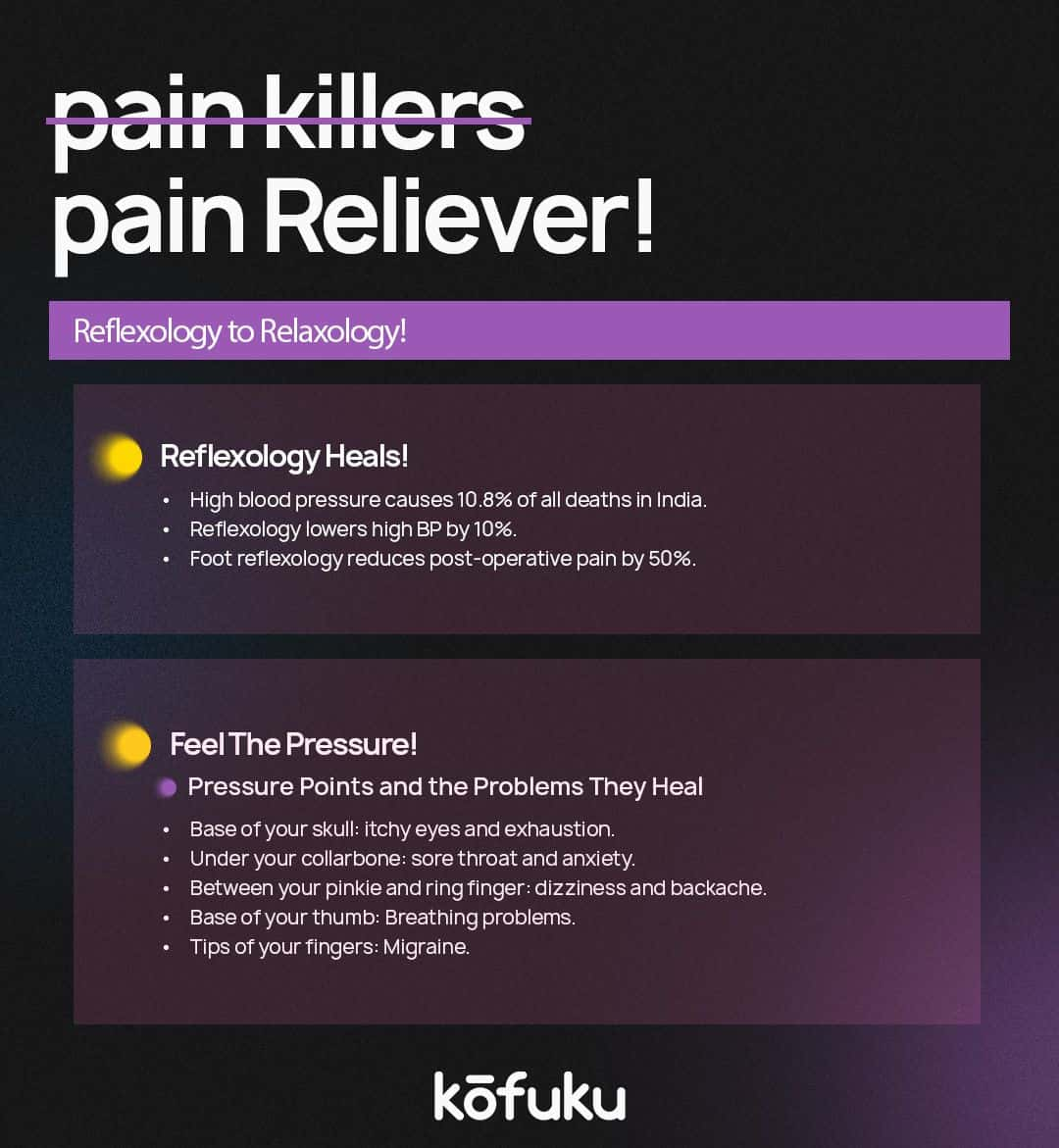10 Health Benefits of Reflexology You Should Know


Introduction
Have you ever wondered why a foot massage feels so amazingly good after a tiring day? It’s like all your tension, stress just melt away. But what if I told you that this simple act is more than relaxation? It is rooted in ancient healing techniques such as padabhyanga in India and tui na in China also called Reflexology in the West.
But let me tell you Reflexology is more than just a foot massage or pressing at certain points on your feet. It is based on the idea that these points are connected to various organs and systems of our body. So by massaging them or stimulating them, we are not just relieving stress but promoting overall well-being. Sounds intriguing isn’t it? Let’s dive deeper to learn more about reflexology.
What is Reflexology?
Reflexology also known as zone therapy is considered to be a complementary therapy used to treat various medical conditions by applying pressure on the feet, hands, and ears. Reflexologists believe that with the help of it, they can restore balance and help our bodies' overall healing process.
There are two internationally recognized reflexology methods - the Ingham method and the Rwo Shur method. The former is performed without using any tools, while the latter method uses tools such as wooden sticks.
Fun fact, there have been studies that recommend administering foot reflexology therapy among cancer patients can be helpful to improve the physical and psychological aspects.
10 Health Benefits of Reflexology
Although not scientifically proven, reflexology has gained widespread attention among the general public and in the health sector. Reflexology is still being explored, but a number of people agree with its way of reducing stress, improving circulation, and even pain.
1. Stress and anxiety relief - This is one of the top reasons people opt for reflexology as it stimulates our nerve endings and calms our nervous system which in turn helps with tension and anxiety.
2. Better circulation and blood flow - The rhythmic pressure applied on the points can promote the right amount of stimulation and increase blood flow and oxygen toward the cells.
3. Improving Sleep - Struggling with sleep? Reflexology is the way! It helps you relax your mind and body making it easier to fall asleep.
4. Better digestion - Believe it or not, pressing certain areas of the foot may help with digestive issues or constipation-related issues.
5. Pain management - People often use reflexology to reduce chronic pain that could come from migraine headaches, back pain, or arthritis.
6. Detoxification and boost immune system - By gently massaging the areas that correspond with the liver or kidney it may unblock the passage and help with the removal of toxins and waste products from the body. It just doesn’t end there, the massage points can promote better immunity for us.
7. Boost of energy - Feeling lethargic or exhausted? You can try reflexology. It could help you with your mood and rejuvenate your body.
8. Emotional well-being - Reflexology theory believes that emotional distress can manifest into physical pain. Reflexology can give a better flow of endorphins which can help reduce depression and improve mental health.
9. Helps with Edema - Pregnant women often suffer from swollen feet and ankles but regular reflexology might help with it.
10. Balanced energy levels - This is for all the yoga, crystal girlies, and of course others interested in the whole idea of manifestation of positive energy. According to Chinese medicine principles, reflexology or foot massages can help balance the flow of energy.

When to avoid and possible side effects
Feeling good and relaxed is always an option we prefer but sometimes not everyone can have the best of both worlds. Reflexology should be avoided by those who suffer from
-
A history of blood clots in their legs
-
Foot ulcers (due to uncontrolled diabetes)
-
Untreated foot infections
-
Low platelet count (could give bruises quickly)
-
Gout
-
Circulatory problems
Now coming to possible side effects, although reflexology is harmless and considered safe by many there are a few things to keep in mind before going for an appointment.
-
Lightheadedness
-
Nausea
-
Temporary discomfort
-
Fatigue
-
Emotional release

Conclusion
If you’re looking for a natural way to relax and release stress, reflexology is your way. But remember it may not be used as a substitute for your existing medical treatments. It can be a wonderful add-on complementary therapy but always consult with your health provider.
So next time when you feel aches and pain, adding a little pressure in the right places can do wonders for your body!
FAQs
What to expect in a reflexology session?
The session lasts for 30-60 minutes and will consist of a massage table and aromatherapy cream. There are several techniques used by the reflexologist such as; rotating thumb, tendon pinching, hook-in and backup.
How often can we go for reflexology?
It depends on the treatment you are receiving, usually, one session is good but the reflexologist might call you for a follow-up appointment.
How soon can you see the benefits?
The majority of patients feel the difference in the first session itself but it depends on person-to-person considering their body dynamics of healing.
Can I do reflexology at home?
Reflexology is ideally performed by a trained person but there are courses you can try and become certified. There are reflexology foot charts provided online for your reference, you can sit in a quiet place, use your thumb, and apply pressure on areas that are sore and tense.
Remember to breathe deeply, relax, and enjoy.
Is reflexology just a placebo effect?
Not always, while it may be linked to the placebo effect many people have reported physical relief from stress, anxiety, and pain through reflexology. Even if the benefit comes from expectation and belief the overall experience can be valuable.



